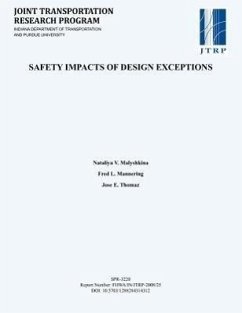
Post-Construction Evaluation of Lime-Treated Soils
Versandkostenfrei!
Versandfertig in über 4 Wochen
23,99 €
inkl. MwSt.

PAYBACK Punkte
12 °P sammeln!
Lime is used to treat weak subgrade soils during construction of highways. A small amount of lime (4 to 7%) is used to rapidly dehydrate and modify fine grained soils. The modification process improves workability and compactability of the soils. Although the lime modification process is primarily aimed at construction expediency, additional effects such as long-term improvement of stiffness and/or strength by pozzolanic and carbonation cementation reactions are expected. Lime treatment has been employed in Indiana over several decades, but the long-term performance of lime-treated soils has n...
Lime is used to treat weak subgrade soils during construction of highways. A small amount of lime (4 to 7%) is used to rapidly dehydrate and modify fine grained soils. The modification process improves workability and compactability of the soils. Although the lime modification process is primarily aimed at construction expediency, additional effects such as long-term improvement of stiffness and/or strength by pozzolanic and carbonation cementation reactions are expected. Lime treatment has been employed in Indiana over several decades, but the long-term performance of lime-treated soils has not been well quantified and no field tests have been done on roads in service. A comprehensive field investigation was carried out to determine the properties of subgrade soils treated with lime in pavements that had been in service for at least five years. Six sites were selected for the field tests. At each site, SPT, DCPT, and FWD tests were performed to evaluate the in-situ stiffness and/or strength properties of the lime-treated subgrade. Laboratory tests from soil samples taken from the SPT spoon were done to obtain index properties of the lime-treated subgrade and the lime content that remains in the soil. The long-term performance of the lime-treated subgrade at each site has been evaluated by comparing the soil indices and stiffness and/or strength properties of the lime-treated subgrade soil with those of the natural soil. In addition, the lime content of the subgrade and the natural soil were measured to establish the remaining lime in the treated subgrade and detect any leaching in the underlying soil. The research has shown the following: (1) the lime remains in the soil even after 11 years of service of the road after construction; (2) the addition of lime decreases the plasticity of the soil and increases its CBR; and (3) the construction quality observed from the field tests is highly variable. 17.












